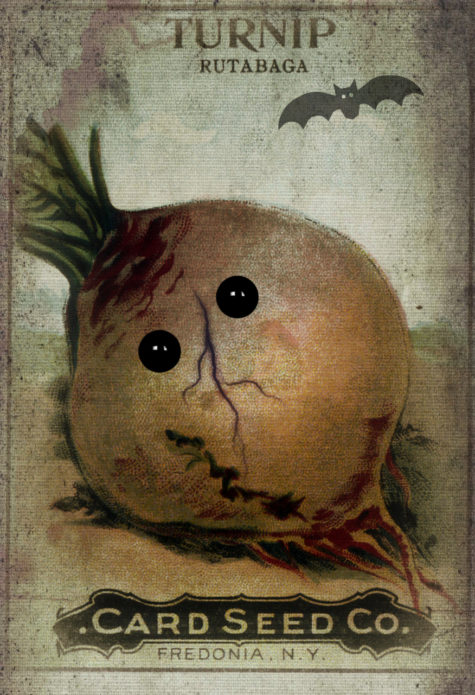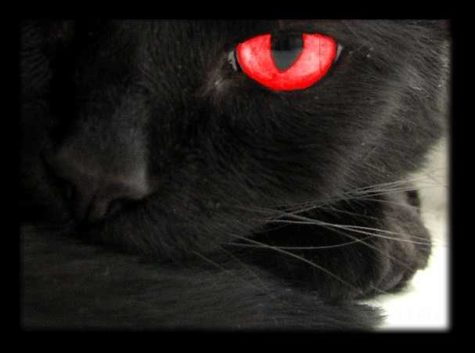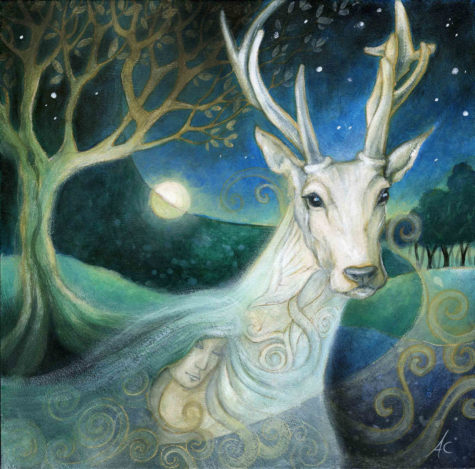July Lore
Because the warm weather continues, activity levels are high, even though the days are beginning to shorten. Consequently, numerous festivals during this month focus on family, friends, and social interaction.
For magical purposes, July directs our attention to personal growth and improvements. This includes increasing your knowledge, continuing efforts for prosperity, creating new ideas and works of art, and also taking time out periodically to really enjoy yourself. Our society sometimes mistakes much-needed leisure time for laziness but this months’s energies know better. Go and have fun, carrying the Goddess with you for a little extra energy.
July Correspondences:
- Nature Spirits: hobgoblins (small grotesque but friendly brownie-type creatures), faeries of harvested crops.
- Herbs: honeysuckle, agrimony, lemon balm, hyssop
- Colors: silver, blue-gray
- Flowers: lotus, water lily, jasmine
- Scents: orris, frankincense
- Stones: pearl, moonstone, white agate
- Trees: oak, acacia ash
- Animals: crab, turtle, dolphin, whale
- Birds: starling, ibis, swallow
- Deities: Khepera, Athene, Juno, Hel, Holda, Cerridwen, Nephtys, Venus
Power flow:
Relaxed energy; preparing, succeeding. Dream work; divination and meditation on goals and plans, especially spiritual ones.
July Festivities:
At first the Romans called this month Quintilis, but later renamed it Julius after Julius Caesar, who was born in this summer month. The Greek Olympian was held for about a week in July. This festival in honor of Zeus consisted of competitions in athletics, drama, music, and other activities. During the time of the Olympian, all participants were given safe-conduct to and from the games. The constant petty Greek squabbles were put aside. A victory in the Olympian was a great achievement, both for the individual and for their city.
Two of the Roman holidays held during this month were July 8 – 9 when the Goddess Juno was honored and the Neptunalia on July 23, when Neptune, the god of the seas and earthquakes, was placated.
In Japan, the Full Moon of July saw the O-Bon, or Festival of Lanterns. This was a combination of Buddhist and Shinto beliefs that honored the dead. Homes, tombs, and ancestral tablets were thoroughly cleaned. Altars and shrines were decorated. The gardens were hung with lanterns to light the way of the dead so that they could join with their families for the three-day ceremony.
The Egyptian New Year fell in July, as did the Opet Festival, which commemorated the marriage of Isis and Osiris. Their sexual union was said to bring good luck to all people. About the same time in Rome, the love of Venus and Adonis was celebrated. The Egyptian year was measured against the Nile and its yearly fertile floods. This was also the time of the birth of Isis and Nephthys, Osiris, Set, and Haroeris. These days were the ones won by Thoth for these deities; births; in other words, there were the necessary days to make the solar and lunar calendars match.
The Incas had a ceremony called Chahua-huarquiz, Chacra Ricuichi, or Chacra Cona, which meant Plowing Month. While the Northern Hemisphere was beginning its agricultural harvests with the reaping of the corn crop, the Southern Hemisphere was just beginning to break ground for planting.
Buddha’s Birth and Preaching, also called the Picture Feast, was celebrated in Tibet.
From: Moon Magic and 365 Goddess
What follows is a list (in alphabetical order) of the names given to the July moon. Also listed is the tradition and/or origin of that moon name:
Blackberry Moon ~other
Little Ripening Moon ~Creek
Blessing Moon ~Dark Janic
Blood Moon ~other
Buck Moon ~Algonquin
Buffalo Bellow Moon ~Omaha, Arapaho
Claiming Moon ~Celtic, Janic (full)
Corn Popping Moon ~Winnebago
Crane Moon ~Choctaw
Dropping Deer Horns Moon ~Kiowa
Ducks Moult Moon ~Cree
Fallow Moon ~other
Grain Moon ~other
Grass Cutter Moon ~Abernaki
Hay Moon ~Cherokee, Algonquin
Horse Moon ~Apache
Hungry Ghost Moon ~Chinese
Little Harvest Moon ~Creek
Little Ripening Moon ~Creek
Mead Moon ~Medieval English
Meadow Moon ~other
Middle Summer Moon ~Ponca, Dakota
Peaches Moon ~Natchez
Raptor Moon ~Hopi
Raspberry Moon ~Anishnaabe
Red Berries moon ~Assiniboine
Ripe Corn Moon ~Cherokee
Ripe Moon ~San Juan, Apache
Ripe Squash Moon ~Agonquin
Ripening Moon ~Mohawk, Passamaquoddy
Rose Moon ~Neo Pagan
Salmon River Moon ~Wishram
Smoky Moon ~Maidu
Summer Moon ~Colonial American, Algonquin
Sun House Moon ~Taos Native American
Thunder Moon ~Algonquin
Wild Red Cherries Moon ~Sioux
Wort Moon ~other
Young Corn Moon ~Potawatomi
According to the old roman calendar July 18 is a “dies ater” or black day, meaning a day of ill omen, or Day of Bad Omens. It marks the defeat of the Romans by the Gauls in the Battle Allia in 390 BC which in turn lead to the sack of Rome by the Gauls.
October 6 is also a “dies ater” or black day as it marks the anniversary of the battle of Arausio (105 BC).
Not much is said about the dos and don’ts or any rituals associated with either day, So, I thought it would be appropriate to post this excerpt from a little book called Signs Omens and Portents in Nebraska Folklore, published in 1933:
Signs of evil portent are among the most common of surviving folk beliefs in Nebraska. In number and currency they rival the popular omens concerned with weather and marriage and they are regarded with perhaps a greater degree of seriousness than signs of the latter type. Such a mass of superstitions having to do with death and bad luck hints at underlying pessimism in human beings. It suggests a preoccupation with the idea of death and a constant dread of inevitable calamity.
Possibly thoughts of melancholy are not so pervasive as the signs might lead us to believe, and it is reassuring to note that open credulity has almost disappeared. The mere survival of the signs, however, is a poignant reminder of a fear-ridden past, and such modern taboos as those against counting cars in a freight train and turning in a funeral car are evidence that superstitions are still in the making.
There is much confusion in the signs. Those which are regarded as bad luck omens by many people have become portents of death to others. The shift may be the result of a natural tendency to make omens specific rather than to leave them merely general indications of good or ill fortune.
Many of the signs seem to be based on a rather obvious association of ideas. Funerals bring to mind the common fate of man. Almost any incident connected with a burial may be looked upon as a sign of another death or an impending disaster. The hooting of an owl has an ominous sound. It causes a shudder, inspires fear, and becomes linked with thoughts of future afflictions. Although the howling dog may not as in legend see the goddess of death, he wakens with his mournful falsetto thoughts of gloom, and quite naturally may become to the superstitious a messenger of approaching distress.
Other signs indicate the connection between ignorance and fear, the tendency to look with dread upon the unknown, and to find in the unusual cause for anxiety. The most commonplace occurrence may become a menace, if it takes place at an unexpected time. When standards of appropriateness are violated, when the incongruous is noted, suspicion and fear are aroused.
In such signs the psychological basis seems obvious enough. In others the roots of belief are more difficult to suggest. Possibly the Romans are responsible for many omens associated with birds; the belief in the ill luck attendant upon salt-spilling may come from the Jewish and pagan use of salt in sacrificial rites, and the fear inspired by breaking a mirror may be traced to the use of mirrors by magicians in sorcery. But the origin of many of the symbols seems lost to us entirely. Like the events they predict, they are obscure, and they are perhaps more interesting because of the element of mystery which surrounds them.
July is normally the month when the new antlers of buck deer push out of their foreheads in coatings of velvety fur. It was also often called the Full Thunder Moon, for the reason that thunderstorms are most frequent during this time. It is known as the Hay Moon or the Meadow Moon because the meadows are at their greatest point of growth in this month, and it is a time for hay-cutting. Other names for this month’s Moon include: Blood Moon, Grain Moon, Green Corn Moon, Herb Moon, Hungry Ghost Moon, Wort Moon.
Native American fishing tribes called it the Sturgeon Moon because sturgeon, a large fish of the Great Lakes and other major bodies of water, were most readily caught during this month. A few tribes knew it as the Full Red Moon because, as the Moon rises, it appears reddish through any sultry haze.
The energies surrounding this full moon are ones of success, happiness, and fulfilment. We are blessed with the first harvest of the season – a reward for all our hard work. For this reason, July’s full moon is also known as the Blessing Moon. Energy moves into creation. Opportunities for self-reliance and confidence, unity and balance abound.
The Moon at this time brings us feelings of being connected. Connection to Spirit encourages us to first recognize blessings in our own lives, and then pay them forward – thus continuing the cycle of positive energy.
Correspondences:
- Colors: Green, silver, blue-gray
- Gemstones: Moonstone, white agate, opals or pearls
- Trees: Ash and oak
- Gods: Juno, Venus, Cerridwen, Athena, Nephthys, Lugh
- Herbs: Mugwort, hyssop, lemon balm
- Element: Water
This is a great time to do divination and dreamwork. Find a way to incorporate the watery energy of the Blessing Moon into your spell crafting and ritual. Enjoy the relaxing feeling of July’s full moon and use it in your personal meditation.
Celebrating the Full Buck Moon:
- Wear shades of green to honor the herb harvest
- Adorn your hair and altar with herbs and greenery
- Burn sage, lavender or rosemary incense
- Prepare herbal tea and lavender or lemon balm cookies
- Bless your herb garden
Collected from various sources








